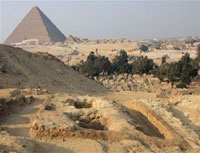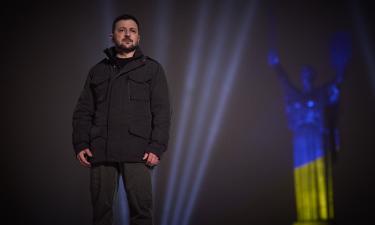Egyptian Archeologists Found Roman-era Mummy
Egyptian archaeologists working in the Western Desert uncovered 14 Greco-Roman tombs dating back 2,300 years at a modern construction site, the Supreme Council of Antiquities said.

The archaeologists discovered four plaster human masks, a gold fragment decorated with the four sons of the god Horus, as well as coins, clay and glass, the Cairo-based council said in an e-mailed statement today. A mummy of a woman measuring 97 centimetres, wearing some jewelry and covered with coloured plaster depicting a Roman costume, was also found, Business Week reported.
The one metre (three feet) long gypsum sarcophagus portrays a woman dressed in Roman robes and contains a mummified woman or girl who died in the Greco-Roman period about 2300 years ago.
"We are sure (the mummy) is female. Either she was a small woman, and mummies always shrink, or she could have been a young woman," Zahi Hawass, chief of the Supreme Council of Antiquities, told AFP.
The archaeologists also found a sheet of gold depicting the four sons of Horus, the ancient Egyptian sky god, and clay and glass vessels at the site in the Bahariya Oasis, some 300 kilometres (186 miles) south west of Cairo, according to AFP.
Subscribe to Pravda.Ru Telegram channel, Facebook, RSS!




